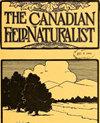加拿大滨燕(Riparia Riparia)的自然和人为筑巢栖息地
Q4 Agricultural and Biological Sciences
引用次数: 1
摘要
河岸燕子(Riparia Riparia)是加拿大一种受威胁的候鸟,它们在人工和自然河岸挖掘的洞穴中筑巢。直到20世纪中期,筑巢记录卡上显示,加拿大60%的银燕在人造栖息地筑巢。在这里,我们根据各种来源的数据,包括繁殖鸟类地图集和eBird,提供了加拿大各省和地区自然和人工栖息地中银燕筑巢种群的最新比例。2001年至2017年在加拿大各地报告的银燕筑巢群表明,用于筑巢的主要栖息地类型发生了逆转,现在在自然栖息地发现筑巢的概率为56%。我们讨论了导致这种明显逆转的可能机制,并建议对自然筑巢栖息地进行正式保护和恢复,特别是在其共同利益包括气候变化弹性的情况下。在土地所有者和工业界的支持下,人工栖息地中的活跃殖民地可能会对有弹性的银燕种群做出重要贡献,目前大多数银燕似乎在全国各地的自然栖息地筑巢。本文章由计算机程序翻译,如有差异,请以英文原文为准。
Natural and human-made nesting habitat use by Bank Swallow (Riparia riparia) in Canada
Bank Swallow (Riparia riparia) is a Threatened migratory bird in Canada that nests colonially in burrows excavated in both human-made and natural banks. Until the mid-20th century, nest record cards reported 60% of Bank Swallows in Canada nested in human-made habitats. Here we provide an update on the proportion of Bank Swallow nesting colonies in natural and human-made habitats in Canada’s provinces and territories based on data from a variety of sources including breeding bird atlases and eBird. Bank Swallow nesting colonies reported from 2001 to 2017 throughout Canada indicate a reversal in the dominant type of habitat used for nesting, with a 56% probability that nesting occurrences are now found in natural habitats. We discuss possible mechanisms responsible for the apparent reversal and recommend that natural nesting habitat be formally protected and restored where it has been altered, especially where co-benefits include climate change resiliency. With the support of landowners and industry, active colonies in human-made habitats will likely make an important contribution to a resilient Bank Swallow population, the majority of which presently appears to nest in natural habitats across the country.
求助全文
通过发布文献求助,成功后即可免费获取论文全文。
去求助
来源期刊

The Canadian Field-Naturalist
Agricultural and Biological Sciences-Ecology, Evolution, Behavior and Systematics
CiteScore
0.60
自引率
0.00%
发文量
54
期刊介绍:
The Canadian Field-Naturalist (ISSN: 0008-3550) publishes scientific papers by amateur and professional naturalists and field biologists, reporting observations and results of investigations in any field of natural history, provided they are original, significant, and relevant to Canada.
 求助内容:
求助内容: 应助结果提醒方式:
应助结果提醒方式:


